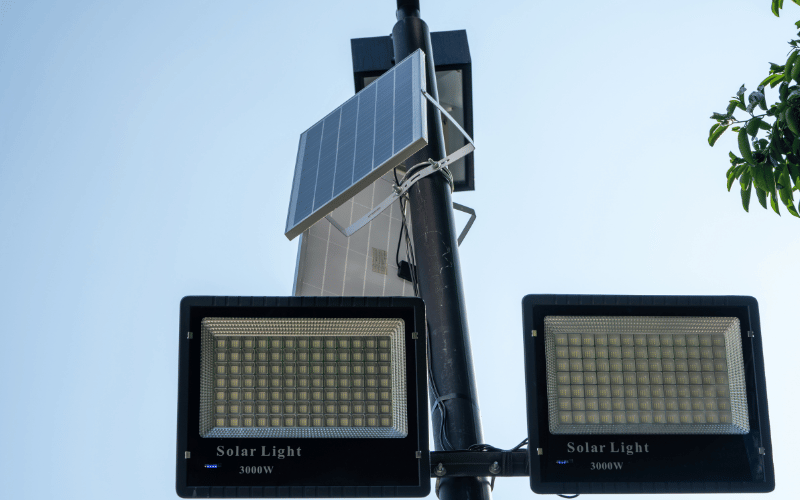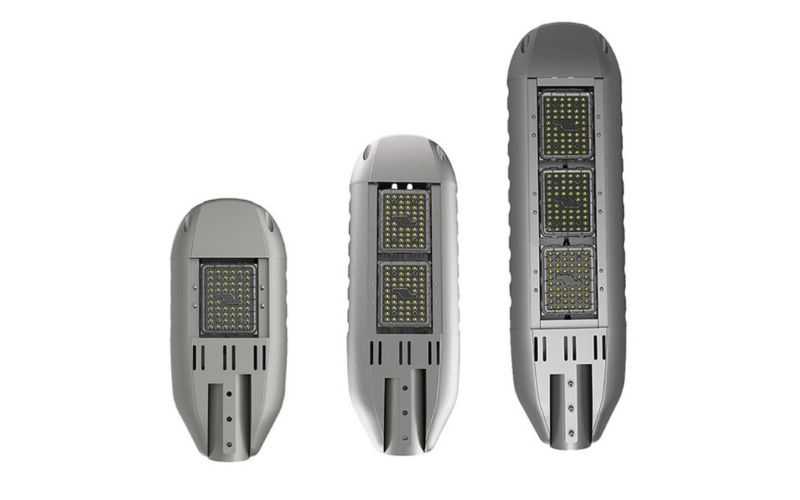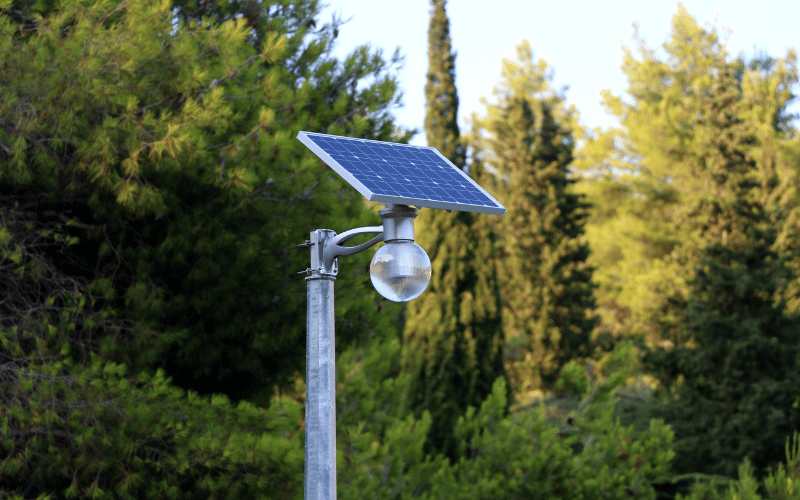Solar street lights have become a cornerstone of sustainable public infrastructure, offering an eco-friendly solution to outdoor lighting needs. Cities and communities increasingly rely on these systems to reduce energy consumption, lower carbon footprints, and provide reliable illumination in areas where traditional grid power may be unavailable or costly to install. However, understanding the actual performance of solar street lights is often muddled by a common misconception: the advertised wattage.
Many buyers assume that higher wattage equals better performance, but this isn’t always the case. I’ve worked with countless clients who were initially drawn to high-wattage claims, only to discover that these numbers don’t tell the whole story. Wattage refers to the energy consumption of the light, not necessarily its brightness or efficiency. Factors like lumens, battery capacity, solar panel efficiency, and even the quality of the LED chips play a far more significant role in determining how well a solar street light performs.
This article serves as a practical guide to help you cut through the marketing jargon and evaluate solar street lights based on their absolute power and performance. I’ll explain how to assess key metrics like lumens, battery storage, and solar panel output, so you can make informed decisions that align with your lighting needs and sustainability goals. Whether you’re planning a large-scale municipal project or simply exploring options for a small community, understanding these details will ensure you choose a system that delivers both reliability and value.
Table of Contents
ToggleUnderstanding Solar Street Light Power
Solar street lights are more than just eco-friendly lighting solutions; they are self-sustaining systems designed to harness the power of the sun and convert it into reliable illumination. To truly understand their performance, you need to look beyond the surface-level wattage claims and dive into how these systems generate, store, and use energy. Let’s break down the essentials and uncover what really matters when evaluating solar street light power.
What is Solar Street Light Power?
Solar street light power refers to the system’s ability to generate, store, and utilize energy efficiently to provide consistent lighting. Each component plays a critical role in ensuring the system operates effectively, even in challenging conditions.
- Solar Panel: The solar panel is the heart of the system, capturing sunlight and converting it into electrical energy. High-quality panels with efficient photovoltaic cells ensure maximum energy generation, even on cloudy days.
- Battery: The battery stores the energy generated by the solar panel during the day and powers the LED fixture at night. Lithium-ion and lithium iron phosphate (LiFePO4) batteries are common choices due to their long lifespan and high energy density.
- LED Fixture: The LED fixture determines the brightness and efficiency of the light. High-lumen LEDs with low energy consumption ensure optimal performance while conserving battery power.
- Controller: The controller acts as the system’s brain, regulating energy flow between the solar panel, battery, and LED fixture. It also prevents overcharging and over-discharging, which can damage the battery and reduce the system’s lifespan.
When these components work in harmony, solar street lights can provide reliable, sustainable lighting for years with minimal maintenance.
Advertised Wattage vs. Actual Power
One of the most common misconceptions about solar street lights is that higher wattage equals better performance. While wattage indicates the energy consumption of the LED fixture, it doesn’t directly correlate to brightness or overall efficiency.
-
Why Advertised Wattage is Often Misleading
Manufacturers often highlight wattage as a selling point, but this number only tells part of the story. For example, a 100W solar street light may sound powerful, but if the system uses low-quality LEDs or an inefficient battery, it won’t deliver the expected brightness or runtime. Instead of focusing solely on wattage, you should evaluate the system’s lumens, which measure the actual brightness of the light. -
The Importance of Focusing on Lumens (Brightness) Over Wattage
Lumens provide a more accurate representation of a solar street light’s performance. A well-designed 50W system with high-lumen LEDs can outperform a poorly designed 100W system in terms of brightness and energy efficiency. Always prioritize lumens over wattage when comparing solar street lights, and consider other factors like battery capacity and solar panel efficiency to get a complete picture of the system’s capabilities.
Quick Comparison Table
To help you better understand the relationship between advertised wattage, actual power, and typical lumen output, here’s a quick comparison table for different applications:
| Advertised Wattage | Actual Power (W) | Typical Lumen Output | Application |
|---|---|---|---|
| 30W | 10-15W | 3,000-4,000 lumens | Pathways, residential streets |
| 60W | 20-30W | 6,000-8,000 lumens | Parking lots, small commercial areas |
| 100W | 40-50W | 10,000-12,000 lumens | Highways, large public spaces |
| 150W | 60-80W | 15,000-18,000 lumens | Industrial zones, wide roadways |
This table highlights how advertised wattage often overstates the actual power consumption and why lumens are a more reliable metric for evaluating performance. By focusing on the right metrics and understanding the role of each component, you can select a solar street light system that meets your specific needs and delivers long-term value.
Key Factors That Determine Solar Street Light Performance
Solar street lights are intricate systems where every component must work in harmony to deliver reliable and efficient performance. To truly evaluate their capabilities, you need to understand the key factors that influence energy generation, storage, and output. Let’s break these down into actionable insights, so you can make informed decisions tailored to your specific needs.
Energy Generation: Solar Panel Efficiency
The solar panel is the engine of any solar street light, converting sunlight into electrical energy. Its efficiency and design directly impact how much energy the system can generate, especially in varying environmental conditions.
-
Monocrystalline vs. Polycrystalline Panels: Which is Better?
Monocrystalline panels are the gold standard for solar street lights, offering higher efficiency (typically 18-22%) and better performance in low-light conditions. Their uniform black appearance also makes them more aesthetically pleasing. Polycrystalline panels, while less efficient (15-18%), are more cost-effective and suitable for projects with budget constraints. If space is limited or you need maximum energy generation, monocrystalline panels are the better choice. -
How Panel Size, Angle, and Location Affect Charging Efficiency
The size of the solar panel determines how much sunlight it can capture, while the angle and location influence how effectively it absorbs solar energy. For optimal performance, position the panel at an angle that matches your latitude and ensures maximum exposure to sunlight throughout the day. Avoid shading from trees, buildings, or other obstructions, as even partial shading can significantly reduce energy generation. -
The Role of MPPT vs. PWM Controllers in Optimizing Energy Generation
Maximum Power Point Tracking (MPPT) controllers outperform Pulse Width Modulation (PWM) controllers by optimizing the voltage and current from the solar panel to match the battery’s requirements. MPPT controllers can increase energy harvest by up to 30%, making them ideal for systems where maximizing efficiency is critical. PWM controllers, while less efficient, are more affordable and suitable for smaller or less demanding applications.

Energy Storage: Battery Capacity and Type
The battery is the backbone of a solar street light, storing energy during the day to power the light at night. Choosing the right battery type and capacity is crucial for ensuring consistent performance.
-
Lithium-Ion vs. Lead-Acid Batteries: Pros and Cons
Lithium-ion batteries are the preferred choice for modern solar street lights due to their high energy density, long lifespan (up to 2,000 cycles), and lightweight design. They also require minimal maintenance. Lead-acid batteries, while more affordable, are bulkier, have a shorter lifespan (500-1,000 cycles), and require regular maintenance to prevent sulfation. For long-term reliability and efficiency, lithium-ion batteries are the better investment. -
Understanding Autonomy: How Long Lights Can Run Without Sunlight
Autonomy refers to the number of nights a solar street light can operate without sunlight. For example, a system with three days of autonomy can provide consistent lighting even during extended periods of cloudy weather. To calculate autonomy, consider the battery capacity, daily energy consumption, and the efficiency of the system. -
Calculating Required Battery Capacity (Amp-Hours or Watt-Hours)
To determine the appropriate battery capacity, calculate the total energy consumption of the LED fixture per night and multiply it by the desired autonomy. For instance, if your light consumes 50W for 10 hours per night and you need three days of autonomy, the required battery capacity would be:
[ 50W × 10 hours × 3 days = 1,500 Watt-hours (Wh) ]
Divide this by the battery voltage to convert it into Amp-hours (Ah). For a 12V battery, the capacity would be:
[ 1,500 Wh ÷ 12V = 125 Ah ]
Energy Output: LED Efficiency and Brightness
The LED fixture determines the quality and distribution of light, making it a critical factor in solar street light performance. Efficiency, brightness, and design all play a role in meeting specific lighting requirements.
-
Lumens Per Watt: The True Measure of LED Efficiency
Lumens per watt (lm/W) is the best metric for evaluating LED efficiency. High-quality LEDs can achieve 150-200 lm/W, providing bright illumination with minimal energy consumption. Avoid focusing solely on wattage, as it doesn’t reflect the actual brightness of the light. -
How Mounting Height and Fixture Design Affect Light Distribution
The mounting height and design of the fixture significantly influence how light is distributed. For example, a higher mounting height provides broader coverage but reduces intensity, while a lower height increases brightness in a smaller area. Opt for fixtures with advanced optics or reflectors to ensure uniform light distribution and minimize dark spots. -
Standards for Municipal and Roadway Lighting (e.g., Lux Requirements)
Municipal and roadway lighting must meet specific lux requirements to ensure safety and visibility. For instance, residential streets typically require 5-10 lux, while highways may need 20-30 lux. Use these standards as a benchmark when selecting solar street lights, and ensure the system’s design aligns with the intended application.
By understanding these key factors—solar panel efficiency, battery capacity, and LED performance—you can evaluate solar street lights with confidence. Each component plays a vital role in delivering reliable, efficient lighting, and optimizing these elements ensures your system meets both functional and sustainability goals.
Evaluating High-Wattage Claims
High-wattage claims in solar street light advertisements often grab attention, but they can also mislead buyers who don’t fully understand what these numbers represent. To make informed decisions, you need to look beyond the flashy marketing and evaluate the real-world performance of these systems. Let’s break down what high-wattage claims actually mean, how to assess operational power, and what to consider when dealing with high-power LED streetlights.
What Does “9000 Watt Solar Street Light” Actually Mean?
When you see a claim like “9000 Watt Solar Street Light,” it’s easy to assume this refers to the light’s actual power consumption or brightness. However, these numbers often exaggerate the system’s capabilities and can be misleading.
-
Deconstructing Inflated or Misleading Advertising
Many manufacturers use high-wattage figures to describe the theoretical maximum load capacity of the system, not its actual operational power. For example, a “9000W” label might refer to the combined wattage of all LEDs in the fixture if they were running at full capacity, which rarely happens in real-world conditions. In reality, most solar street lights operate at much lower wattages to balance energy consumption with battery capacity and solar panel output. -
The Difference Between Instantaneous Load Capacity and Average Operational Input
Instantaneous load capacity refers to the maximum power the system can handle at any given moment, while average operational input reflects the actual power the system uses during normal operation. A system advertised as “9000W” might only consume 100-200W during regular use, depending on the design and application. Understanding this distinction is crucial to avoid overpaying for a system that doesn’t deliver the expected performance.
Real-World Operational Power
To evaluate a solar street light’s true performance, focus on its typical operating wattage and the energy required to sustain night operation. These metrics provide a more accurate picture of the system’s capabilities.
-
Typical Operating Wattage for Standard Fixtures (e.g., 40W to 120W)
Most solar street lights designed for residential streets, parking lots, or small commercial areas operate within a range of 40W to 120W. This wattage is sufficient to provide adequate brightness (measured in lumens) while maintaining energy efficiency. For example, a 60W fixture with high-lumen LEDs can deliver 6,000-8,000 lumens, which is more than enough for most urban applications. -
Calculating the Necessary Input Power to Sustain Night Operation
To determine the input power required, consider the fixture’s wattage, the number of hours it will operate each night, and the system’s overall efficiency. For instance, a 60W fixture running for 10 hours per night would consume:
[ 60W × 10 hours = 600 Watt-hours (Wh) ]
The solar panel and battery must be sized to generate and store enough energy to meet this demand, factoring in inefficiencies and potential energy losses.
Case Studies of High-Power LED Streetlights
High-power LED streetlights are often used for highways, industrial zones, or large public spaces where higher brightness and broader coverage are required. These systems come with unique challenges and cost implications.
-
Examples of Highway or Large-Area Lighting Systems
For highway lighting, fixtures typically operate at 150W to 300W, delivering 15,000-30,000 lumens to ensure visibility and safety. Large-area lighting systems, such as those used in stadiums or industrial zones, may require even higher wattages, often exceeding 500W. These systems rely on larger solar panels and higher-capacity batteries to sustain their energy needs. -
Cost Implications of Higher Power Systems (Larger Panels, Bigger Batteries)
High-power systems demand more robust components, which significantly increase costs. For example, a 200W fixture might require a 400W solar panel and a 1,200Wh battery to ensure reliable operation. These larger components not only raise the initial investment but also increase installation complexity and maintenance requirements. Buyers must weigh these costs against the benefits of higher brightness and coverage to determine if such a system is truly necessary for their application.
By understanding the nuances of high-wattage claims and focusing on real-world operational metrics, you can avoid falling for exaggerated advertising and select a solar street light system that meets your specific needs. High-power systems have their place, but they must be evaluated carefully to ensure they deliver value without unnecessary expense.
Smart Power Management and Dimming Features
Smart power management and dimming features have revolutionized the solar street light industry, offering tailored solutions to balance energy efficiency and performance. By adjusting brightness levels based on real-time needs, these features ensure optimal energy use while extending the lifespan of the system. Let’s explore the different types of dimming methods, their benefits, and how to choose the right features for your specific application.
Types of Dimming Methods
Dimming methods allow solar street lights to adapt to varying conditions, such as traffic levels or time of night. Each method serves a unique purpose, and understanding their functionality can help you select the best option for your needs.
-
Motion-Based Dimming: Brightens When Motion is Detected, Dims When Idle
Motion-based dimming uses sensors to detect movement near the light. When motion is detected, the light brightens to full power, providing maximum visibility. Once the area is clear, the light dims to a lower brightness level, conserving energy. This method is ideal for areas with sporadic traffic, such as residential streets, pathways, or parking lots. For example, a light might operate at 30% brightness when idle and increase to 100% when a pedestrian or vehicle passes by. -
Time-Based Dimming: Full Brightness for a Few Hours, Then Reduced Brightness
Time-based dimming follows a pre-programmed schedule, delivering full brightness during peak hours (e.g., early evening) and reducing brightness during off-peak hours (e.g., late at night). This method works well in areas with predictable traffic patterns, such as commercial zones or public parks. For instance, a light might operate at 100% brightness from 6 PM to 10 PM and then dim to 50% for the rest of the night. -
No Dimming: Full Power Throughout the Night
Some applications require consistent brightness all night, such as highways or high-security areas. In these cases, no dimming is used, and the light operates at full power from dusk to dawn. While this method ensures maximum visibility, it also consumes the most energy, requiring larger solar panels and batteries to sustain operation.
Benefits of Smart Controls
Smart dimming features offer more than just energy savings—they enhance the overall performance and reliability of solar street lights. By intelligently managing power, these systems deliver consistent lighting while minimizing waste.
-
Extending Battery Life and Ensuring Lights Last All Night
Dimming reduces the energy demand on the battery, allowing it to last longer and maintain sufficient charge for the entire night. This is especially important during cloudy or rainy periods when solar energy generation may be limited. For example, a motion-based dimming system can extend battery autonomy by up to 50%, ensuring reliable operation even in challenging conditions. -
Reducing Energy Consumption in Low-Traffic Areas
In areas with minimal nighttime activity, such as rural roads or industrial zones, dimming significantly reduces energy consumption without compromising safety. By operating at lower brightness levels during idle periods, these systems conserve energy and reduce wear on components, such as the battery and LED fixture.
Choosing the Right Dimming Features
Selecting the appropriate dimming features depends on the specific requirements of your application. Consider factors like traffic patterns, security needs, and energy availability to make an informed decision.
- Recommendations Based on Application (e.g., Residential, Commercial, Public Spaces)
For residential areas, motion-based dimming offers the perfect balance of energy efficiency and safety, providing bright illumination only when needed. In commercial zones or public spaces with predictable traffic, time-based dimming ensures adequate lighting during peak hours while conserving energy during quieter periods. In highways, industrial zones, or high-security areas, dimming may not be necessary to maintain consistent visibility and safety.
Smart power management and dimming features are like the brain of a solar street light, ensuring it operates efficiently and effectively in any environment. By understanding the different dimming methods and their benefits, you can choose a system that meets your needs while maximizing energy savings and performance.
Economic and Environmental Impact
Solar street lights are more than just a sustainable lighting solution—they are a smart investment that delivers both economic and environmental benefits. By understanding the cost dynamics, ecological advantages, and maintenance requirements, you can fully appreciate the value these systems bring to communities and businesses alike. Let’s explore these aspects in detail.
Cost-Benefit Analysis
When evaluating solar street lights, it’s essential to weigh the upfront costs against the long-term savings and benefits. While the initial investment may seem significant, the financial advantages over time make these systems a cost-effective choice.
-
Initial Installation Cost vs. Long-Term Energy Savings
Solar street lights eliminate the need for electricity bills, as they rely entirely on solar energy. While the upfront cost of purchasing and installing the system may be higher than traditional grid-connected lights, the absence of ongoing energy expenses results in significant savings over the system’s lifespan. For example, a solar street light system might cost $1,500 to install, but it can save $200-$300 annually in energy costs, paying for itself within 5-7 years. -
Eliminating Trenching and Cable-Laying Expenses
Traditional street lights require extensive trenching and cable-laying to connect to the power grid, which can account for up to 40% of the total installation cost. Solar street lights, on the other hand, are standalone systems that don’t require any underground wiring. This not only reduces installation costs but also minimizes disruption to the surrounding environment. -
Return on Investment (ROI) Timeline for Solar Street Lights
The ROI for solar street lights typically ranges from 5 to 10 years, depending on factors like energy savings, maintenance costs, and system efficiency. High-quality systems with efficient components and low maintenance requirements can achieve ROI faster, making them a financially sound choice for municipalities and businesses.
Environmental Benefits
Solar street lights contribute to a greener planet by reducing reliance on fossil fuels and centralized power grids. Their environmental impact extends beyond energy savings, making them a key component of sustainable infrastructure.
-
Reduction in Carbon Emissions Compared to Grid-Connected Electricity
By harnessing solar energy, these systems eliminate the carbon emissions associated with electricity generation from fossil fuels. For instance, a single solar street light can reduce CO2 emissions by up to 1 ton over its lifetime, equivalent to planting 25 trees. -
Lower Reliance on Centralized Power Grids
Solar street lights operate independently of the power grid, reducing strain on centralized energy systems. This decentralization enhances energy resilience, particularly in areas prone to power outages or grid instability. -
Suitability for Remote or Off-Grid Locations
In remote or off-grid areas where extending the power grid is impractical or cost-prohibitive, solar street lights provide a reliable and sustainable lighting solution. They enable communities to access modern infrastructure without the environmental and financial costs of grid expansion.
Maintenance and Longevity
The long-term performance of solar street lights depends on the quality of their components and regular maintenance. Understanding these factors ensures you can maximize the system’s lifespan and efficiency.
-
Expected Lifespan of Key Components (LEDs, Batteries, Panels)
High-quality LEDs in solar street lights can last 50,000 to 100,000 hours, equivalent to 10-20 years of operation. Lithium-ion batteries typically last 5-7 years, while solar panels have a lifespan of 20-25 years. Investing in durable components reduces replacement costs and ensures consistent performance over time. -
Routine Maintenance Requirements (Cleaning Panels, Battery Checks)
Solar street lights require minimal maintenance, but regular checks are essential to keep them operating efficiently. Cleaning the solar panels every 6-12 months ensures maximum energy absorption, especially in dusty or polluted environments. Battery checks should be conducted annually to monitor performance and identify any issues early. Additionally, inspecting the LED fixture and controller for wear and tear helps prevent unexpected failures.
By balancing economic considerations with environmental benefits and maintenance needs, solar street lights prove to be a smart, sustainable investment. Their ability to deliver long-term savings, reduce carbon footprints, and provide reliable lighting in diverse settings makes them an invaluable asset for modern infrastructure.
Quick Tips for Choosing the Right Solar Street Light
Selecting the right solar street light can feel overwhelming with so many options on the market, but focusing on key performance factors can simplify the process. Below is a practical checklist to guide you in making an informed decision, ensuring your investment delivers reliable, long-term results.
Focus on Lumens, Not Wattage, to Determine Brightness
One of the most common mistakes buyers make is equating wattage with brightness. Wattage only indicates energy consumption, not the actual light output. Instead, prioritize lumens, which measure the brightness of the light. For example, a high-quality 60W solar street light with efficient LEDs can produce 6,000-8,000 lumens, while a poorly designed 100W light might only deliver 5,000 lumens. Always check the lumens per watt (lm/W) ratio to ensure you’re getting maximum brightness for the energy consumed.
Match Battery Capacity with Solar Panel Output for Optimal Performance
The harmony between the solar panel and battery is critical for consistent performance. A mismatch can lead to undercharging or overloading, reducing the system’s efficiency and lifespan. For instance, if your light consumes 600Wh per night, your solar panel should generate at least 700-800Wh daily to account for energy losses and cloudy days. Pair this with a battery capacity that provides at least two to three days of autonomy, ensuring the light operates reliably even during extended periods of low sunlight.
Choose High-Quality Components for Long-Term Reliability
Investing in high-quality components may increase upfront costs, but it pays off in the long run by reducing maintenance and replacement expenses. Look for monocrystalline solar panels for higher efficiency, lithium-ion or LiFePO4 batteries for longer lifespans, and LED fixtures with a minimum of 50,000 hours of rated life. Additionally, ensure the system includes a robust MPPT controller to optimize energy conversion and protect the battery from overcharging or deep discharging.
Consider Dimming Features to Save Energy and Extend Battery Life
Dimming features, such as motion-based or time-based dimming, can significantly enhance energy efficiency and battery longevity. For example, a motion-based dimming system might operate at 30% brightness when idle and increase to 100% when motion is detected, reducing energy consumption by up to 50%. Time-based dimming is ideal for areas with predictable traffic patterns, allowing you to schedule reduced brightness during off-peak hours. These features not only save energy but also ensure the system lasts longer without compromising performance.
Regularly Clean Solar Panels and Check Battery Health for Consistent Performance
Even the best solar street lights require routine maintenance to perform at their peak. Dust, dirt, and debris can accumulate on solar panels, reducing their efficiency by up to 20%. Clean the panels every 6-12 months, or more frequently in dusty environments, to maintain optimal energy generation. Similarly, check the battery’s health annually to ensure it’s holding a charge effectively. Look for signs of wear, such as reduced runtime or swelling, and replace the battery if necessary to avoid unexpected failures.
By following this checklist, you can confidently choose a solar street light system that meets your specific needs while delivering reliable, energy-efficient performance. Each tip is a small but crucial step toward ensuring your investment provides long-term value and sustainability.
Frequently Asked Questions (FAQs)
Q: Why is the actual power of solar street lights lower than advertised?
A: Advertised power often refers to the theoretical maximum capacity of the system, not its real-world operational power. Manufacturers may highlight the wattage of the LED fixture or the combined capacity of all components, but actual power depends on how efficiently the system operates. Factors like energy losses, battery capacity, and solar panel output determine the true performance. Always focus on lumens (brightness) and system efficiency rather than just wattage.
Q: How do I calculate the lumens needed for my area?
A: To calculate the lumens required, consider the size of the area, the mounting height of the light, and the application. For example, residential streets typically need 5-10 lux, while highways require 20-30 lux. Use this formula to estimate lumens:
[ Lumens = Lux × Area (in square meters) ]
For instance, if you need 10 lux for a 100-square-meter area, the required lumens would be:
[ 10 × 100 = 1,000 lumens ]
Adjust based on your specific lighting needs and consult with a professional if necessary.
Q: What is the best battery type for solar street lights?
A: Lithium-ion and lithium iron phosphate (LiFePO4) batteries are the best options for solar street lights. They offer high energy density, long lifespans (5-7 years for lithium-ion and up to 10 years for LiFePO4), and minimal maintenance. Lead-acid batteries are more affordable but have shorter lifespans and require regular upkeep. For long-term reliability and efficiency, choose lithium-based batteries.
Q: Can solar street lights work in areas with limited sunlight?
A: Yes, solar street lights can work in areas with limited sunlight if the system is designed correctly. Use high-efficiency monocrystalline solar panels to maximize energy generation, even in low-light conditions. Pair the panels with a battery that provides at least three days of autonomy to ensure consistent performance during cloudy periods. Additionally, consider dimming features to conserve energy and extend battery life.
Q: How do dimming features affect performance and battery life?
A: Dimming features significantly improve energy efficiency and battery longevity. Motion-based dimming reduces brightness when the area is idle, conserving energy for when it’s needed most. Time-based dimming schedules lower brightness during off-peak hours, further reducing energy consumption. These features decrease the strain on the battery, allowing it to last longer and maintain consistent performance over time.
Q: How often should the battery in a solar street light be replaced?
A: The replacement frequency depends on the battery type and usage. Lithium-ion batteries typically last 5-7 years, while lithium iron phosphate (LiFePO4) batteries can last up to 10 years. Regularly check the battery’s health, especially if you notice reduced runtime or performance. Replace the battery promptly if it shows signs of wear, such as swelling or difficulty holding a charge, to avoid system failures.
Conclusion
Determining the true power of solar street lights requires understanding the synergy between energy generation, storage, and efficient output. Focus on lumens for brightness, autonomy for consistent performance, and system reliability rather than being swayed by exaggerated wattage claims. These factors ensure you select a system that meets your needs while delivering long-term value.
The future of solar street lighting looks bright, with emerging technologies like advanced MPPT controllers, AI-driven energy management, and higher-efficiency solar panels driving continued improvements. Solar LED street lights are also playing a pivotal role in the development of smart cities, integrating with IoT systems to enhance energy efficiency and urban infrastructure.
Take the time to evaluate your specific lighting requirements and invest in high-quality solar street lights. By doing so, you contribute to a sustainable future while ensuring reliable and efficient lighting for your projects.




